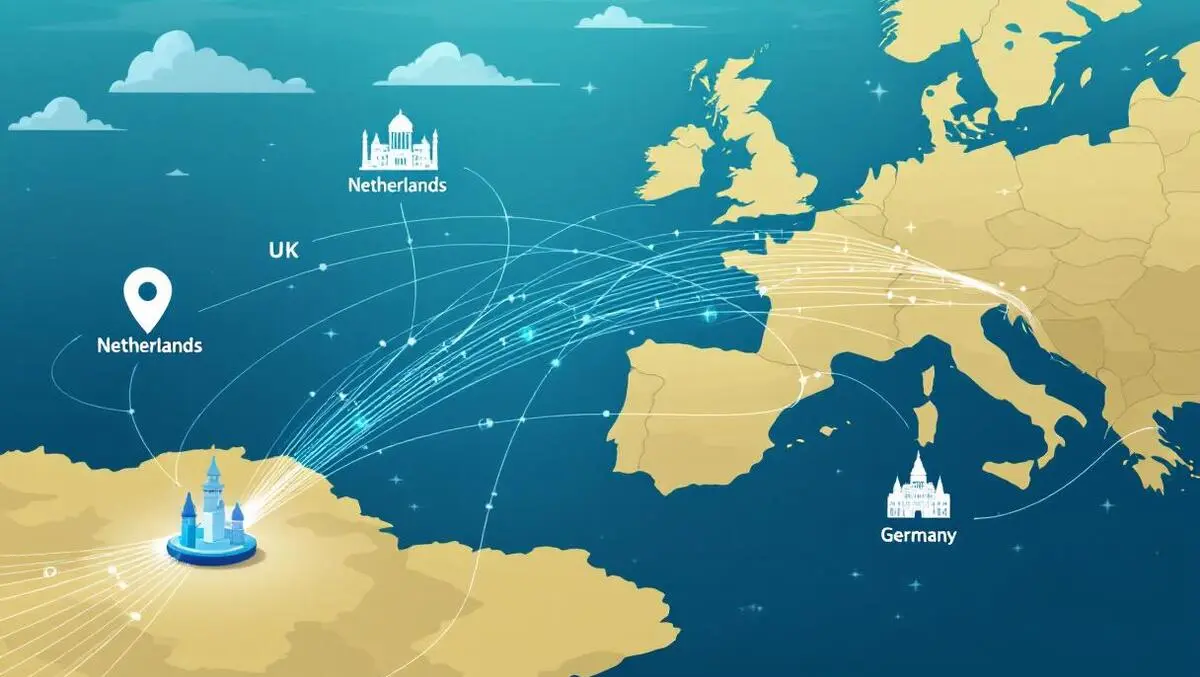
EXA Infrastructure unveils new fibre route linking FLAP cities
EXA Infrastructure has announced plans to build a new fibre route connecting London with Frankfurt, Amsterdam and Brussels.
The new 1,200 km connectivity infrastructure will include 1,085 km of low-loss G.652D terrestrial fibre and a 115 km subsea link between Margate in the United Kingdom and Ostend in Belgium, using ultra-low-loss G.654C cable. This marks the first new subsea cable across the North Sea in a quarter of a century and comes as demand for more robust and scalable digital connectivity in Europe continues to increase.
EXA Infrastructure will be the sole telecom consortium member for the new submarine cable, taking responsibility for both Landing Party and backhaul services. The project will also deliver upgrades to existing In Line Amplifier (ILA) facilities across the UK, Belgium, and the Netherlands. Two cable landing stations – EXA's 21st and 22nd globally – will form pivotal points on the expanded network, which already spans the U.S. East Coast, Western Europe, and the Mediterranean.
Route features
The project is designed to strengthen digital infrastructure in Europe by offering scalable fibre paths and increasing redundant and resilient connection options between major economic hubs. Modern high-fibre-count cables will be used across the terrestrial and subsea segments, aiming to provide high-bandwidth, low-latency connections that meet diverse business and government requirements.
The development of a new route across the North Sea has involved significant technical and regulatory considerations, especially given the complexity of the seabed in the region and the varied permissions required in different European jurisdictions.
Steve Roberts, SVP Strategic Network Investments and Product Management at EXA Infrastructure, highlighted the significance of the undertaking, underscoring both its technical challenges and its strategic value for digital connectivity across Europe's major commercial centres:
"This is a real milestone for robust connectivity options in Europe, and includes the first new subsea cable on this complex corridor – the North Sea - in 25 years. This new route complements our investment in the Channel Tunnel delivering scalable, modern and optimised fibre paths between key FLAP hubs."
Technical and regulatory challenges
Ciaran Delaney, Chief Operating Officer at EXA Infrastructure, described the scope and challenges involved in the construction process, emphasising the regulatory and environmental difficulties encountered during the build:
"This has been a complex and challenging build.. The regulatory landscape in Europe plus the North Sea's challenging seabed conditions demanded 'in region' expertise in the various jurisdictions plus sophisticated installation techniques particularly on the wet segments to install and protect the system from future interruption to service. At EXA Infrastructure, we have the right expertise and experience to overcome the most complex and challenging situations to in this case, deliver the next-generation connectivity across Europe."
The terrestrial portions of the new network are intended to provide end-to-end fibre connectivity between the FLAP (Frankfurt, London, Amsterdam, Brussels) cities, which have grown as central nodes in Europe's digital economy. The subsea segment, spanning 115 km, will be the first of its kind to be constructed on this North Sea corridor since 2000.
Broader network context
EXA Infrastructure operates a fibre network stretching over 155,000 kilometres across 37 countries, including six transatlantic cables. The network offers services such as low-latency connections for financial, gaming, and broadcast sectors, as well as mission-critical and hyperscale infrastructure for governments and large enterprises. The addition of the new fibre route will further enhance the company's ability to serve the continent's growing demand for digital transportation capacity and resilience.
The two new landing stations associated with this project add to EXA's considerable European presence, signalling continued expansion within the region's highly competitive digital transport market.


